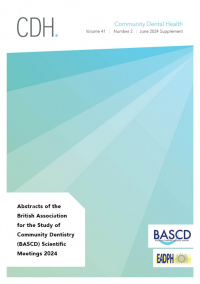Oral health-related quality of life in the Myanmar population: The first national oral health survey 2016 - 2017
Oral health-related quality of life in the Myanmar population: The first national oral health survey 2016 - 2017
Abstract
Objectives: To describe the oral health-related quality of life (OHRQoL) and its potential influencing factors within the Myanmar population. Methods: Data were from the first national oral health survey, involving 3,513 participants aged 15-18 years, 35-44 years, and 60-74 years from 21 selected townships in Myanmar. Self-administered questionnaire-based surveys, conducted from December 2016 to January 2017, included socio-demographics, behavioral factors, self-reported oral conditions (number of teeth present, teeth and gingival conditions), and inquiries regarding OHRQoL (a set of 12 questions with 5 response options) using the recommended questions from WHO Oral Health Surveys. Results: The most prevalent oral health issues were difficulties in chewing (32.2%) and biting foods (30.8%). In bivariate analysis, older individuals, rural residents, and participants with higher educational levels were associated with OHRQoL. In multiple regression analysis, self-reported number of teeth, teeth and gingival conditions were strong predictors of OHRQoL in all age groups. Conclusion: Self-rated oral health conditions predicted quality of life due to oral problems. The development of national oral health policies and strategies is imperative to facilitate early detection of oral health problems and promote the awareness of oral health importance. Keywords: quality of life, risk factors, oral health, self-assessment, Myanmar




